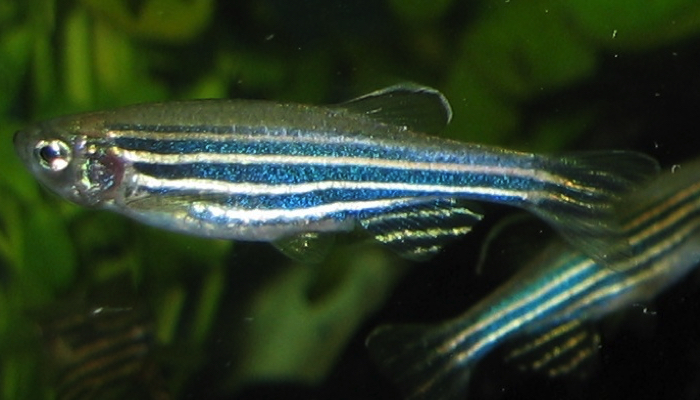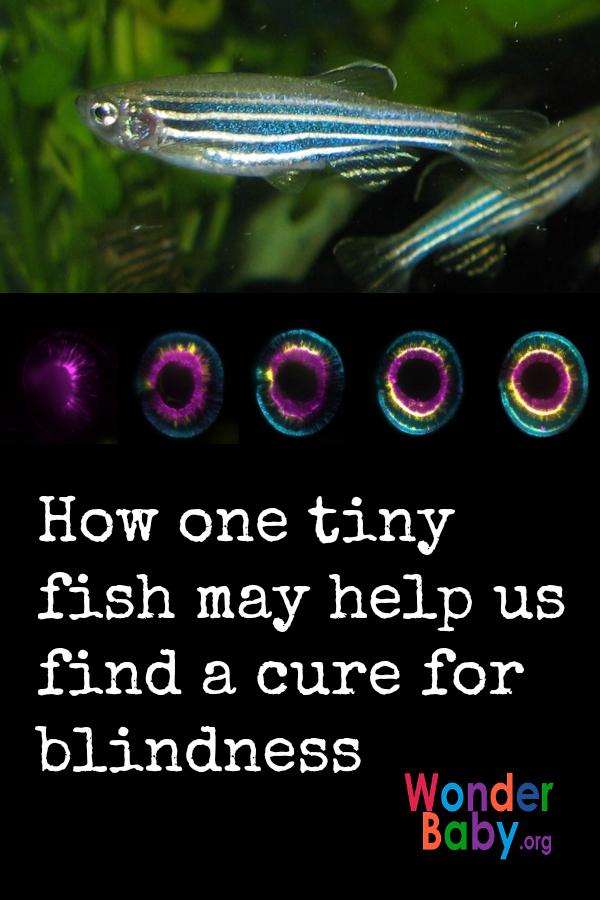How one tiny fish may help us find a cure for blindness

In research, scientists use animal models to test their theories when looking for cures to human diseases. They’ve used mice for generations, but mice have limitations in research. Many scientists are now using zebrafish in their research.
Why zebrafish? Good question!
- Zebrafish, believe it or not, are actually very closely related to us genetically
- Zebrafish retinas are very similar to human retinas
- They call zebrafish a “living test tube” and use the fish to screen new drugs just by adding the medications to the water in the tank
- Zebrafish embryos are transparent, so scientists can actually watch stem cells as they form
- They also have very fast life cycles (moving from a single-cell egg to a hatched baby fish in only five days), making them a quick study producing a lot of data over a short period of time
- Zebrafish can also regenerate their own tissue (like a lizard who can regrow a lost tail), but in zebrafish they can even regenerate parts of damaged organs
At the University of Michigan Kellogg Eye Center, they are studying the visual system of the zebrafish. What they want to figure out is how the fish is capable of repairing damage to their visual system and then take that information and apply it to degenerative retinal diseases, optic nerve damage and other blindness causing diseases in humans. They want to be able to “harness the patient’s own body to repair itself.”
Zebrafish are a perfect model to study how genes affect eye development. For example, we know that the gene CYP1B1 can cause juvenile glaucoma, but no one really understands how CYP1B1 is related to eye development. Unlocking that mystery could also lead to a cure.

Combining the gene editing tool CRISPR-Cas with the fast life cycle of zebrafish also gives scientists a real-time way to study the development of the retina and retinal cells, particularly looking at whether or not retinal cells in humans can be regenerated.
Dr. Hitchcock, one of the researchers at Kellogg Eye Center, says that “while all of these studies are pre-clinical, stem cell therapy is clearly on the horizon in ophthalmology.”
Learn more about how Kellogg Eye Center is using zebrafish to study eye diseases in humans in this article, Studying the Zebrafish or watch the video below:

Related Posts

Eye Conditions and Syndromes, Visual Impairment
Neuralink Announces Plans to Restore Sight to the Blind with Brain Chip
Elon Musk’s company Neuralink has announced plans to begin human trials of its new “Blindsight” brain chip by the end of 2025.

Visual Impairment
The Gift of Understanding: How a Young Child Helps His Blind Father Navigate Life
When a parent is blind, it’s natural for people to wonder how their sighted child will adapt. Will they struggle to understand their parent’s needs? Will they feel burdened by...

Braille and Literacy, Toys, Visual Impairment
24 Braille Toys for Kids Who are Blind
Everything from alphabet blocks to raised line coloring pages and activity books to puzzles to card and board games... and so much more! And it's all in braille ready for...